Rehabilitate Shoulder Injuries with Effective, Evidence-Based Shoulder Rehab Exercises.
Shoulder pain [2] is a common reason individuals begin physical therapy—especially after surgery, trauma, or overuse.
With a limited range of motion and then discomfort during movement, patients may face challenges in regaining full function.
But with the right shoulder rehab exercises, you may help reduce shoulder pain, restore joint function, and prevent future injuries
This guide offers practical shoulder rehabilitation exercises that support recovery from rotator cuff tears, frozen shoulder [1], and subacromial pain syndrome.
All exercises should be guided by a physical therapist and can be incorporated into a comprehensive rehabilitation program.
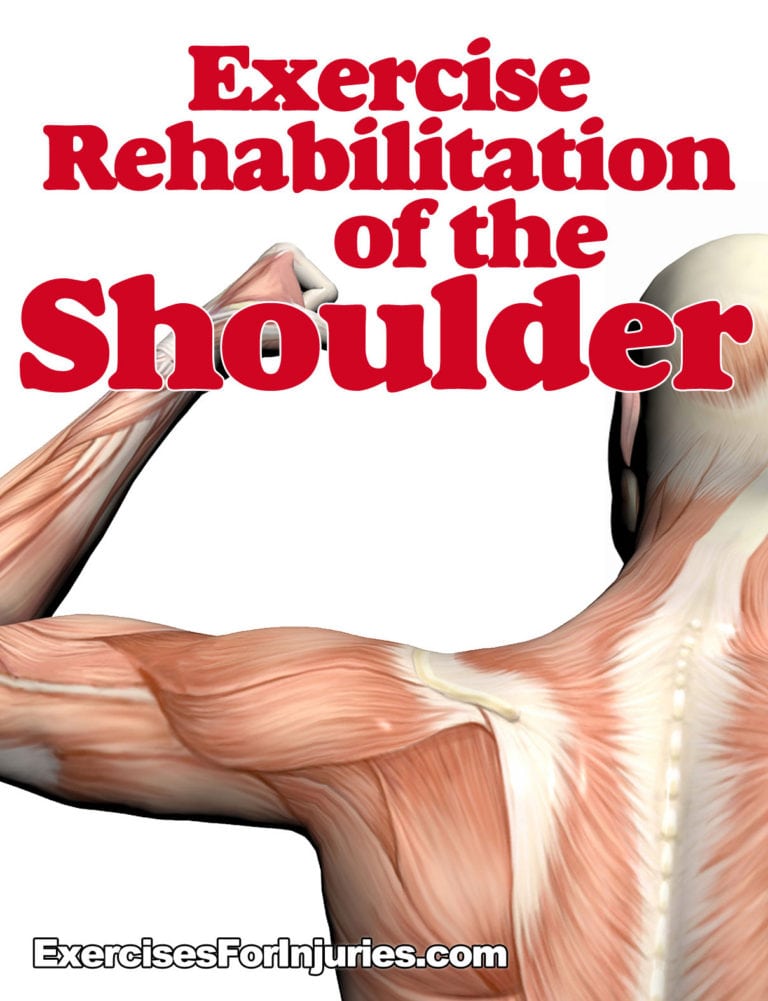
1. Shoulder External Rotation (Door Frame Stretch)
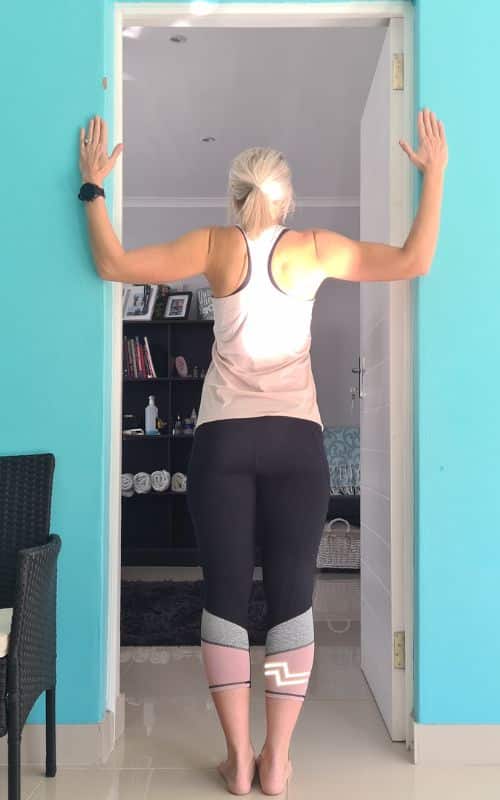
Setup: Stand in a neutral position, knees slightly bent, body upright.
Step-by-step:
- Place your arm bent at 90° with the elbow bent and then tucked at your side.
- Position your forearm against a door frame, palm facing forward.
- Slowly rotate your upper body away from the door frame to feel a gentle stretch in the shoulder.
- Hold for 15–30 seconds, then return to the starting position.
- After that, repeat 2–3 times per arm.
Target muscles: Rotator cuff, shoulder muscles
2. Scapular Retraction Exercise with Resistance Band
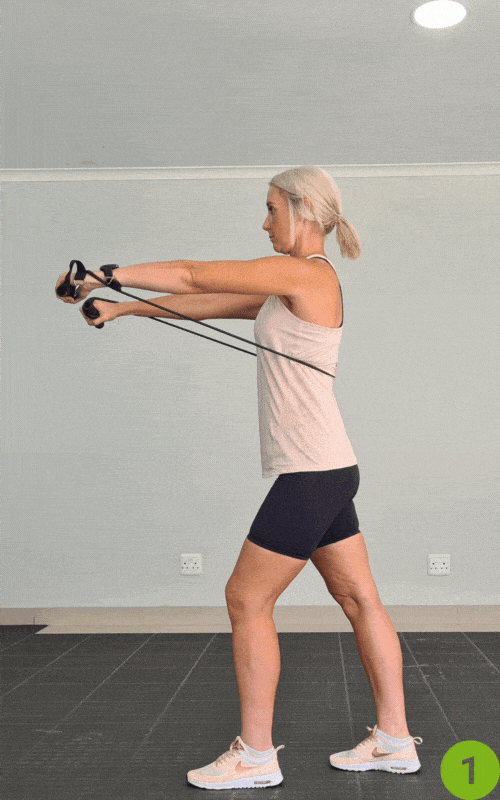
Step-by-step:
- Anchor a resistance band at chest height.
- Hold the band with both hands, elbows slightly bent, arms extended forward.
- Slowly pull the band toward your chest by squeezing your shoulder blades together.
- After that, pause briefly, then slowly lower back to start.
- Perform 2–3 sets of 10–15 reps.
Focus: Middle and lower trapezius, shoulder blades
3. Shoulder Flexion with Light Weight
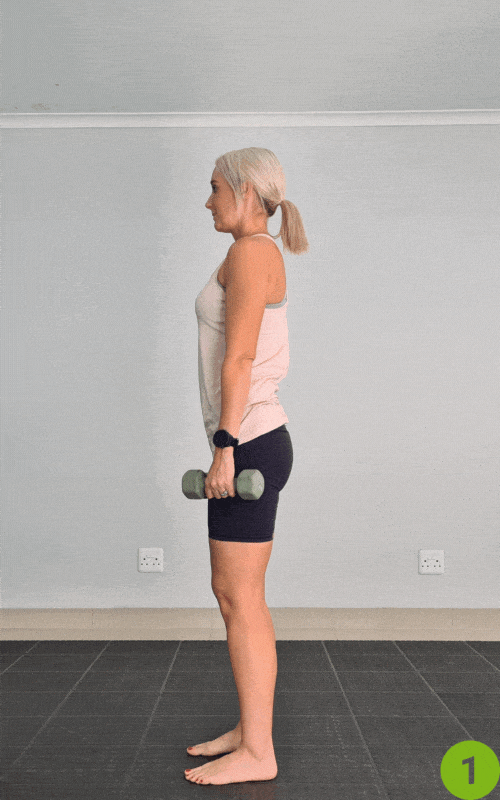
Step-by-step:
- Basically, in a standing position, hold a lightweight with one hand.
- With your elbow straight, lift your arm in front of you to shoulder height.
- Pause, then slowly lower with control.
- Perform 2–3 sets of 10 reps on each arm.
Purpose: Strengthen the anterior deltoid and improve shoulder flexion range
4. Prone Shoulder Extension
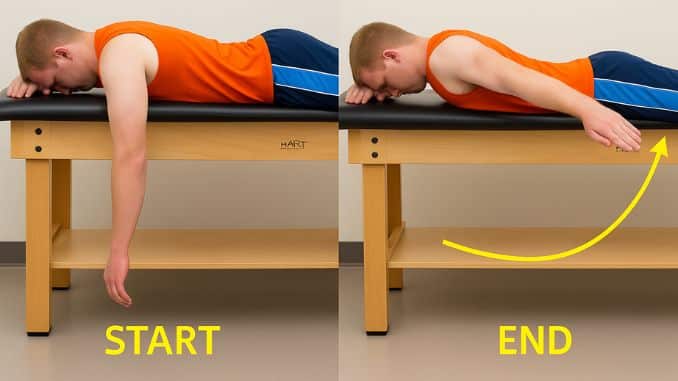
Step-by-step:
- Lie face down on a bench or bed with your arm straight off the edge.
- Slowly lift your arm to torso level. Maintain a neutral spine and then avoid neck hyperextension
- Hold for 2 seconds, then lower slowly.
- After that, repeat 10 times per side.
Muscles targeted: Lower trapezius, rotator cuff muscles
Benefits of Shoulder Strengthening Exercises
- Relieve existing shoulder pain caused by inflammation or overuse
- Support improved mobility and functional strength, especially during later rehab stages
- Help prevent rotator cuff tears and subacromial pain syndrome [3]
- Support balanced shoulder blade motion
- Aid in full recovery from physical therapy or injury
- Promote long-term joint stability and then better posture
“When treating patients post-shoulder surgery or injury, I always emphasize scapular control and rotator cuff stability before progressing to complex strengthening. A large percentage of shoulder dysfunction comes from poor scapular mechanics and delayed activation of the middle and lower trapezius. Teaching patients how to properly retract the shoulder blades and perform external rotation exercises with light resistance builds the neuromuscular control they need to avoid re-injury.”-Dr. Elizabeth L. Eckstrom, PT, DPT, OCS Board-Certified Orthopedic Clinical Specialist, University of Utah Health
Additional Tips for Effective Rehab
- Warm up before exercises with arm circles or pendulum swings.
- Perform movements slowly to avoid triggering new pain.
- Keep hips facing forward and elbows slightly bent unless instructed otherwise.
- Gradually increase resistance or repetitions over time—never force through pain.
- Always seek a doctor’s supervision or guidance from a PT, DPT, or certified physical therapist when experiencing shoulder instability.
Who Benefits From These Exercises?
- These simple exercises are ideal for:
- Individuals recovering from shoulder surgery
- People with chronic shoulder pain or rotator cuff damage
- Athletes involved in overhead sports
- Clients in rehabilitation programs for injury prevention
- Aging adults maintaining shoulder function and then upper body strength
Recap: Shoulder Rehab Essentials
Start with low-resistance exercises like external rotation and then scapular retraction.
Progress to strengthening exercises with light weights.
Always maintain proper arm position, posture, and then breathing.
Avoid movements that trigger pain or cause discomfort.
Discover the simple, proven movements inside Shoulder Pain Solved (EFISP) that are helping thousands finally feel relief—without meds, surgery, or endless appointments.
Frequently Asked Questions
How soon after shoulder surgery can I start rehab exercises?
This depends on the type of surgery (e.g., rotator cuff repair vs. labral repair) and your surgeon’s protocol. Generally, passive range of motion exercises begin within the first 1–2 weeks, followed by active-assisted and strengthening exercises around 4–6 weeks post-op under a physical therapist’s supervision.
What are the best exercises to relieve shoulder pain?
Gentle, targeted movements like pendulum swings, shoulder external rotation with a resistance band, and then scapular retraction drills are excellent for relieving shoulder pain. They activate the rotator cuff muscles and then improve joint mobility without overloading the joint.
How often should I do shoulder rehab exercises?
Typically, up to 5–6 days per week may be appropriate, depending on the rehabilitation phase and then tolerance. Focus on low-intensity, high-frequency sessions, especially in the early stages. Listen to your body and then avoid movements that cause new pain.


